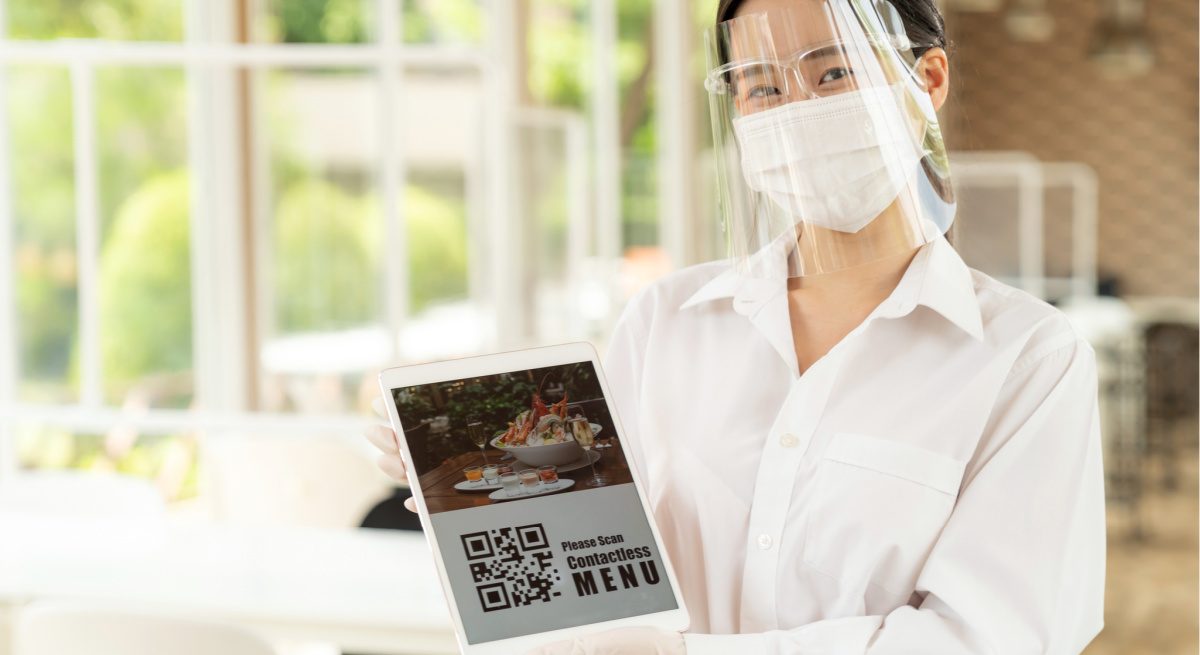Beyond the Pandemic: Why Technology Will Play a Large Role in Restaurant Culture Moving Forward
3 Min Read By Roland Storti
There is no doubt that the restaurant-going experience is in need of change in the wake of the global pandemic but for that change to be meaningful, it must be long-term and safe for patrons, staff and management alike.
Masks and distanced seating are great short-term adaptations to the current climate but restaurants must work toward returning to full capacity. To do so, they must simultaneously improve the dining experience and reduce the spread of germs, even after the worst of the pandemic may have passed or has hopefully passed.
While it may seem like restaurants can survive and return to normal with band-aid solutions like masks and distanced seating, this is not the case. For better or worse, consumers are now much more in-tune to their daily interactions with germs: where and what have lots of them, how they spread during seemingly harmless activities and how dangerous they can be. Because of this, it is likely that even after the world manages COVID-19, people will still experience hygiene anxiety and look to reduce that spread.
If restaurants want to attract customers and maintain competitive edges over their competitors, they must do all they can to make the dining experience closer to germ-free and the right technology can provide the solutions.
Simply put: consumers will not let restaurants return to the old way of doing things. If restaurants want to attract customers and maintain competitive edges over their competitors, they must do all they can to make the dining experience closer to germ-free and the right technology can provide the solutions.
Dining out involves two major germ-spreading events that consumers likely did not think much of before: exchanging menus and paying the bill. Dining is impossible without these so if restaurants want to keep their customers safe and happy (or keep them, period), both events require innovation.
After patrons are seated, the wait staff touches the menus while placing them on the table and the patrons pick them up, exposing the patrons to the airborne particles dropping to the surface and those from touch. Then, the patrons return the menus to the wait staff after ordering, potentially transferring their germs over to the wait staff. Both parties have now been exposed to each other’s germs and those walking past. Short of wait staff memorizing the menu and reciting it to patrons, there must be some alternative readable menu and alternatives like disposable, cleanable or tablet menus can be costly and wasteful.
One solution is encouraging patrons to look up the restaurant’s menu on their smartphones and relay their orders to the waitron, but this can be taken a step further. Why not opt into a platform that automatically makes the menu appear on individuals’ phones when they enter your restaurant? This way, they can seamlessly order without touching communal menus or worrying about germs.
As everyone knows, the meal ends with the serve hand-delivering a booklet containing the bill and the customer paying it. The patron places their debit or credit card in the booklet, which the server takes to the register. The server swipes the card through the machine that has been touched by countless other cards and servers, and returns the card and booklet to the patron. This interaction may actually facilitate more exchanges of germs than the menu trading.
Having the technology to keep people safe built into your restaurant will attract patrons, as well as potential employees who want their safety prioritized.
The clear solution here is online menus and contactless payments. In the last decade, there have been massive improvements in electronic payments, allowing consumers to pay for goods and services directly from their smartphones and eliminating direct contact between wait staff and patrons. Bills become accessible on patrons’ smartphones and they can quickly pay without ever touching cards, much less having someone else touch them. This also expedites payments; gone are the days of diners frantically trying to flag down their waitron to quickly get the bill so they can make it to the movies on time.
Smartphones can ease many aspects of the restaurant experience, like making reservations or letting one know their table is ready, but trading menus and paying are two of the most germ-prone parts that patrons and wait staff alike want rectified the soonest. Real change to the restaurant experience must be made beyond the short term; consumers and wait staff will both be extremely sensitive to situations that might spread germs long after the COVID-19 pandemic is under control. Moreover, these solutions will reduce order mix ups and the potential of fraud in some establishments by unscrupulous staff by card skimming.
Having the technology to keep people safe built into your restaurant will attract patrons, as well as potential employees who want their safety prioritized. Restaurants cannot return to the way things were when the pandemic fades away; when consumers must choose between a restaurant operating business-as-usual and one actively working to protect their health and safety, they will likely choose to spend their money where they feel they are their families are safe.


